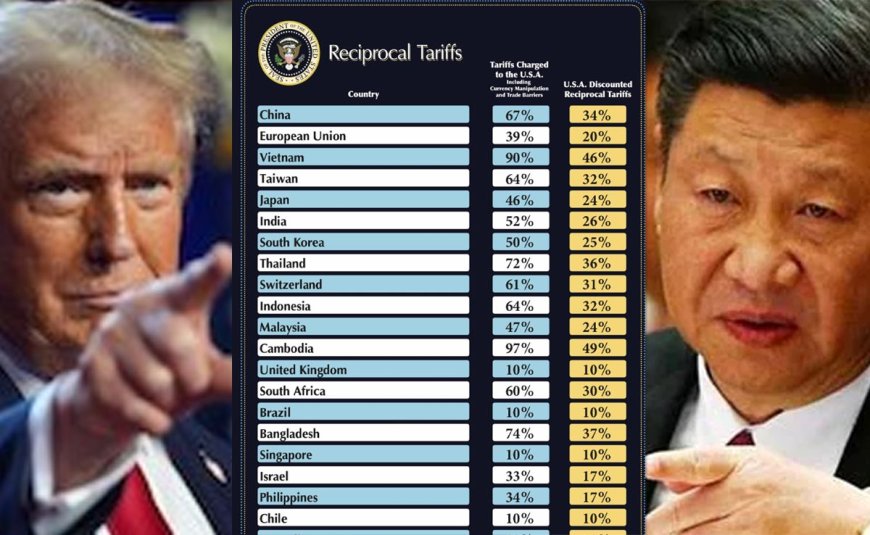Trump's Gamechanger - 125% Tariff On China, Levies On 75 Others "On Hold"
Donald Trump's reciprocal tariffs, which was meant to impose levies against all those who tariff US goods, has taken a fresh turn. It has evolved into a slugfest between China and the United States.

Trump's Gamechanger - 125% Tariff On China, Levies On 75 Others "On Hold"
In a surprising turn of events, former President Donald Trump has announced a bold economic policy that many are describing as a potential gamechanger. The proposal includes an unprecedented 125% tariff on goods imported from China, aiming to counteract what Trump perceives as unfair trade practices. Meanwhile, tariffs on an additional 75 countries are currently "on hold," stirring significant debate among economists and policymakers alike. This announcement comes amidst rising tensions between the United States and China, as well as challenges stemming from global supply chain issues.
Understanding the Impact of Tariffs
Tariffs have historically been a contentious topic in international trade debates. Proponents argue they can protect domestic industries and create jobs, while opponents warn they may lead to higher prices for consumers and retaliatory measures from other nations. The proposed 125% tariff on Chinese imports would drastically increase costs on a wide range of products, potentially affecting everything from electronics to clothing. This dramatic action signals a shift in U.S. trade policy that could have ramifications across the globe.
Reasons Behind the Decision
Trump's administration has consistently highlighted the need to confront China's trade practices, which include intellectual property theft and currency manipulation. By imposing such a steep tariff, Trump aims to pressure China into negotiating more favorable trade terms for the United States. However, the decision to hold off on additional tariffs for 75 other countries reflects a cautious approach, potentially searching for diplomatic avenues before escalating trade conflicts further.
The Broader Economic Landscape
The implications of this tariff strategy extend beyond China. By placing tariffs "on hold" for a large number of countries, the administration is likely trying to maintain trade relationships while navigating a complex geopolitical landscape. Analysts are closely monitoring how these tariffs might influence not only U.S.-China relations but also America’s relationships with its allies and other trading partners. The uncertainty surrounding trade policies can lead to volatility in markets, especially in sectors heavily reliant on imported goods.
Conclusion: What Lies Ahead?
As the situation unfolds, businesses, consumers, and policymakers will have to adapt to these seismic shifts in trade relations. The impact of a 125% tariff may be profound, leading to increased production costs and affecting the availability of goods. For now, stakeholders are left grappling with the potential challenges posed by such an aggressive tariff strategy. With the world watching closely, the next steps taken by the Trump administration will likely influence global trade dynamics for years to come.
For more updates and comprehensive analysis, visit News by dharmyuddh.com. Keywords: Trump tariffs on China, 125% tariff on Chinese goods, trade relations USA China, tariffs on 75 countries on hold, impact of tariffs on economy, Trump's trade policy analysis, US China trade tensions, global supply chain issues, economic repercussions of tariffs, international trade strategies.







